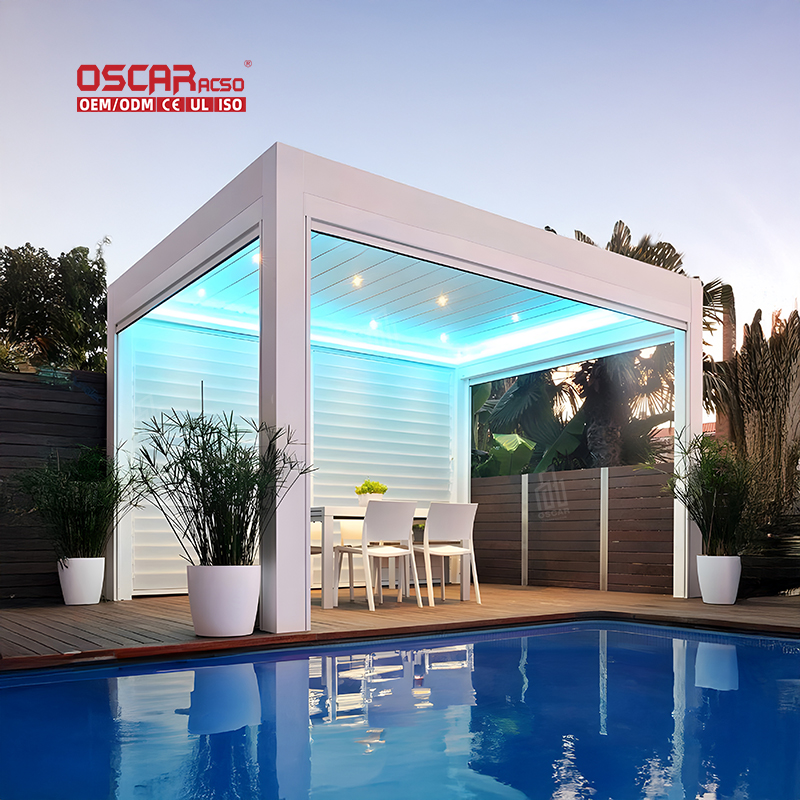Pergola on Grass, Unleashing Your Yard\’s Hidden Potential
Ever gazed at your grassy backyard and dreamed of a stylish pergola nestled there? 🌿 That charming structure can absol...
Ever gazed at your grassy backyard and dreamed of a stylish pergola nestled there? 🌿 That charming structure can absolutely be installed on grass, transforming your lawn into a functional outdoor oasis. While grass isn’t the most conventional base, with the right techniques—like ground preparation and secure anchoring—it’s not only possible but can yield stunning results. Let’s dig into how you can turn that dream into a stable, beautiful reality. 💪

Why Consider a Pergola on Grass?
Installing a pergola directly on grass offers unique advantages:
- •
Blends with Nature 🌼: Creates a seamless, organic look that complements gardens and lawns.
- •
Flexibility in Design 🎨: Freestanding structures allow for placement anywhere—shady corners, sunny spots, or even poolside.
- •
Cost-Effective 💰: Avoids expensive patio or deck renovations; work with what you have!
- •
Enhanced Outdoor Living 🏡: Defines spaces for dining, lounging, or entertaining without hardscaping.
But it’s not without challenges. Without proper anchoring, pergolas can wobble or even topple in strong winds. The key? Solid foundations and smart techniques.
How to Prep Your Grass for Pergola Installation
Ground preparation is non-negotiable. Skip this, and you risk a unstable structure. Here’s how to do it right:
- 1.
Clear & Level 🧹: Remove rocks, weeds, and debris. Use a rake or shovel to flatten the area, ensuring no bumps or dips.
- 2.
Short Grass Advantage ✂️: Mow the grass short to minimize moisture retention near wooden posts (prevents rot!).
- 3.
Mark Utilities ⚠️: Call local services to mark underground lines before digging—safety first!
- 4.
Weed Barrier 🛑: Lay landscape fabric to suppress weed growth under and around the pergola.
Anchoring Methods: Keeping Your Pergola Secure
This is the make-or-break step. Choose an anchoring method based on your soil type, pergola weight, and local climate:
- •
Concrete Footings 🏗️: Dig holes (至少3-4 inches deep, below frost line in cold climates), insert posts, and fill with concrete. Offers maximum stability for permanent structures.
- •
Ground Anchors ⚓: Ideal for temporary or lighter pergolas. Spiral or arrowhead anchors are driven into the soil and attached to posts with cables.
- •
Weighted Bases 🏋️: Use planters filled with sand, gravel, or concrete blocks. Perfect for no-drill solutions and renters.
- •
Pavers or Gravel Beds : Create a level surface with pavers or gravel, then anchor posts on top. Improves drainage and reduces grass contact.
Pro Tip: In windy areas, combine methods—e.g., concrete footings + tension cables—for extra security.
Material Matters: Best Pergolas for Grass Installations
Not all pergolas are created equal. Some materials handle grass bases better:
- •
Aluminum 🤍: Lightweight, rust-proof, and low-maintenance. Often comes with ground-anchoring kits.

- •
Pressure-Treated Wood 🌲: Resists moisture and insects. Pair with concrete footings to prevent rot.

- •
Vinyl & Composite : Durable and weather-resistant, but may require heavier anchoring due to lighter weight.
Avoid untreated hardwoods directly on grass—they’re prone to decay from moisture.
DIY vs. Professional Installation
DIY Route 🛠️:
- •
Pros: Saves money, customizable timeline. Many kits (e.g., Veikous aluminum pergolas) include anchors and instructions.
- •
Cons: Risk of improper anchoring. Requires tools and patience.
Professional Help 👷:
- •
Pros: Expertise in handling slopes, soil issues, and permits. Ensures code compliance and longevity.
- •
Cons: Higher upfront cost.
Word to the wise: If your lawn is uneven or has poor drainage, consult a pro to avoid future headaches.
Maintenance Tips for Grass-Based Pergolas
- •
Inspect Regularly : Check anchors and posts every season for loosening or corrosion.
.jpg)
- •
Manage Moisture 💧: Ensure water drains away from posts to prevent wood rot or metal rust.
- •
Grass Care 🌱: Trim grass around bases regularly to avoid overgrowth that traps moisture.
- •
Re-Tighten Anchors 🔧: Wind and soil shifts may loosen anchors over time.
Personal Insight: The Untapped Potential of Grass Installations
Having seen countless installations, I believe grass-based pergolas are grossly underestimated. They evoke a rustic, garden-party vibe that paved surfaces can’t match. Modern anchoring solutions—like helical piles or weighted planters—make them viable even for temporary setups (e.g., rental homes). For urban gardeners, a petite pergola over grass can define a cozy retreat without overwhelming the space. Just prioritize anchoring adaptability; your future self will thank you during that first storm! 🌪️
Beyond Basics: Creative Integration Ideas
- •
Climbing Plants 🌸: Train ivy, wisteria, or roses over the structure. Softens the look and adds shade.
- •
Lighting & Decor 💡: Hang string lights or install solar lamps for evening ambiance.
- •
Flooring Options : Add stepping stones, deck tiles, or gravel under the pergola to reduce mud and define the area.

- •
Multi-Functional Use : Pair with outdoor rugs, furniture, or even a fire pit to create an “outdoor room”.
The Verdict: Yes, But Do It Smartly!
So, can a pergola go on grass? Absolutely—if you anchor it properly and prep the ground. It’s a fantastic way to maximize green spaces without committing to hardscaping. Whether you opt for a DIY kit or custom build, focus on stability over speed. Your grassy oasis awaits! 🍃

